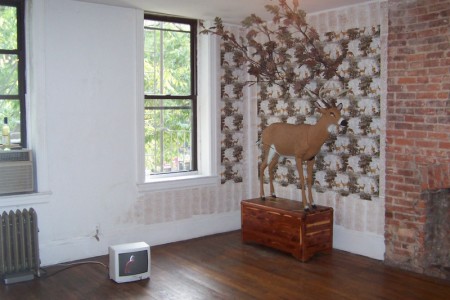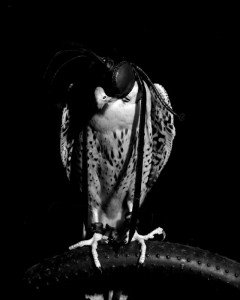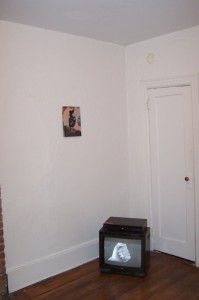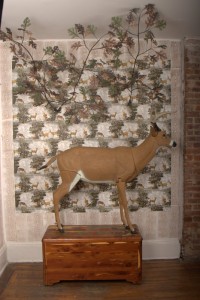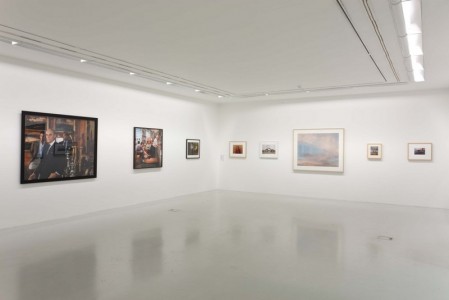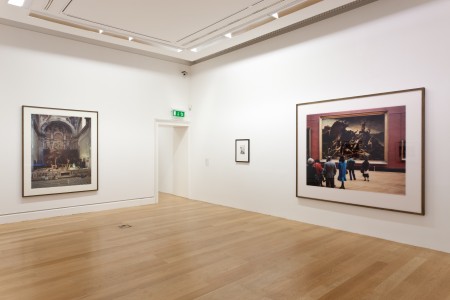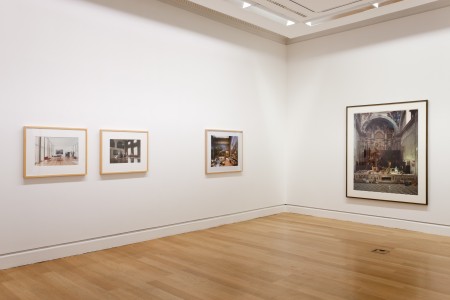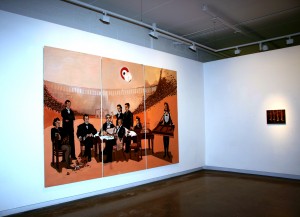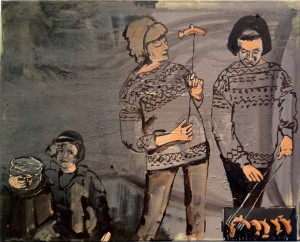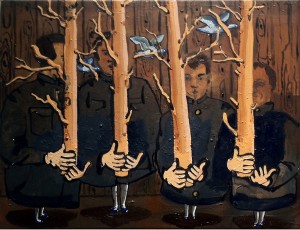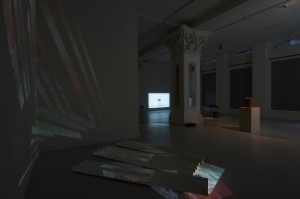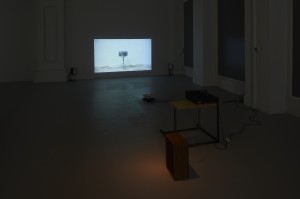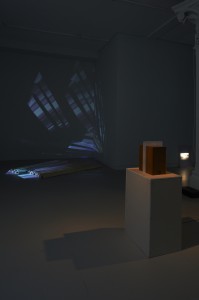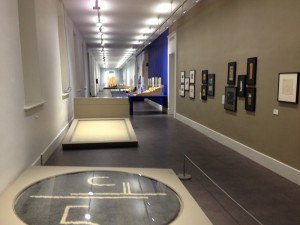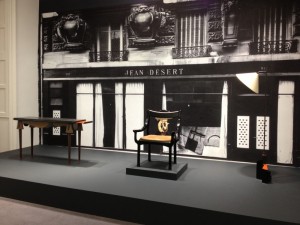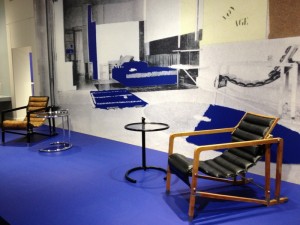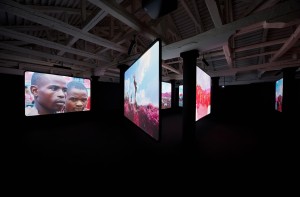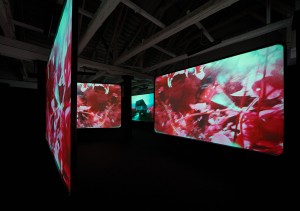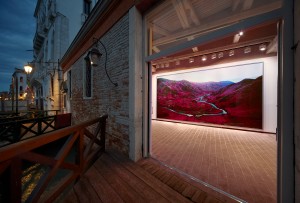Art Trail, Cork
September 21 – October 1, 2006
David Beattie, Conor Harrington, Mark McCullough, CT’ink , Karski, Ono Poiesz, Tom Campbell, Doireann O’Malley
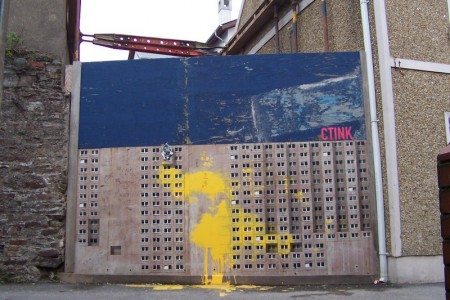
From Where I Stand is an exhibition that explores the notion of identity and public space. The intention is to construct a real and imagined landscape in the realm of the public space resulting in an alternative space that co-exists with the everyday. Art Trail invited artists to respond to the dynamics of the Shandon area as a space/place. Shandon is one of Cork’s most familiar sections and one of it’s best loved. Rich in heritage, it is defined by the Shandon Bells and its winding streets. The streets have a distinctive narrative history of their own but like all narratives about place it changes over time.
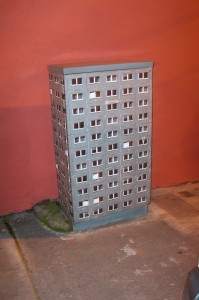
When we talk of globalisation as involving some kind of loss, it seems that this loss is to do with place, and the loss of identity. According to Michel De Certeau, globalisation is impelled by a sense of place. He views the experience of the city as partly an experience of wanting change. The current homogenization of our streetscapes is a direct result of this global experience and has resulted in a lack of engagement with our surroundings. Our urban landscape is becoming indistinguishable from any other. Increasing cultural amnesia needs visiting, with a need for the public to linger on or explore the notion of public space as interactive. Shandon’s distinctive streetscape is an integral part of the city’s identity and is currently undergoing its own transformation.
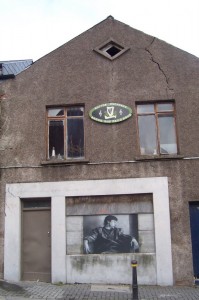
The visual aspect of this year’s Art Trail will primarily take the form of an outdoor exhibition, utilising blank hoardings and disused house fronts as a point of departure. There will also be an indoor element using the Shandon Bells and the Firkin Crane as an exhibition space of video and photography Engaging with public art involves more than objects received passively as in a gallery/museum space- it may open a dialogue with its audience, drawing them together to consider issues, which are wider than the aesthetic. Public art is concerned with contributing to the quality of the imaginative life of the environment. This is a central to this exhibition.
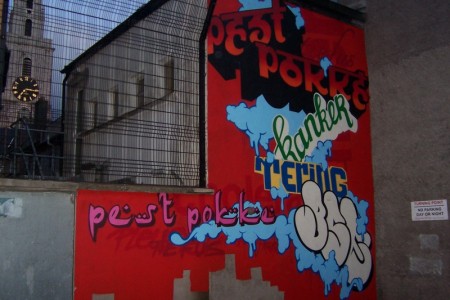
Graffiti-Art is the most common form of public ‘art’, and acts as a site-specific installation in the urban infrastructure. It transforms streets into real-life galleries, through the manipulation and reclamation of public space. It positions itself as a social indicator, describing or expressing the collective aspects of our existence through the documenting of a moment in time. Its ephemeral nature means that it exists for a short period before it is sabotaged or erased. The intention of the exhibition is to draw attention to public spaces and to alter/question/redefine/stimulate the visual landscape.
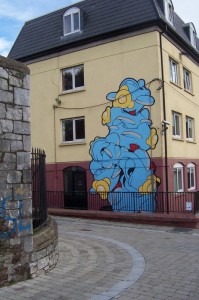
David Beattie was born in Northern Ireland. As a multi-disciplinary artist his work involves installation, performance, video, and photography. Place, identityand the social interaction with one’s environment play a central role in the formation of the work. Wallball (2006) utilises the repetitive nature of kicking a ball against a wall to examine notions of boundaries, partitions, and enclosures.
Mark McCullough: Inspired by street art, his work makes a fast and immediate visual impact on the viewer. By placing the artwork in the context of advertising, one’s expectations of the contemporary urban-scape are unsettled, encouraging a re-evaluation of the use of public space which is all too often dominated by imposing corporate advertising.
CT’ink is the group name of Evol and Pisa73. Both based in Berlin, they share a studio and have shown widely throughout Europe.
CT’ink are best known for their complex, highly detailed, multi-layered stencils. Their work is a commentary on everyday life in a superficial and style-oriented environment. The tone varies between sarcastic/ironic and serious. The subjects of their paintings, as well as the range of materials employed, show CT’ink’s love for absurdities and overlooked items. Old wood, bulky waste, and cardboard are among their favorites. Most pieces are painted with a mixture of spray cans, markers, wall paint and pencils.
Evol (1972) earned a degree in product design at HFG Schwaebisch Gmuend. Pisa73 (1973) studied visual communication at FHG Pforzheim. Both artists work as freelance designers. www.evoltaste.com – www.pisa73
Harrington is interested in the transient aspect of graffiti and draws parallels between these urban traces and human migration. Within the work this manifests in the way which Harrington treats the figure. In contrast to the smooth realism, large areas seem to be receding or being erased which creates a dialogue between presence and absence.
Conor Harrington is represented by Laseridez Gallery, London. His next solo show will be in November of this year. Harrington will also participate in the BLKMRKT Annual, L.A. in early 2007.
Karski Is from the Netherlands. He studied graphic design for four year and fine art for five, later founding his own design studio. Nowadays he works as a freelancer, using different techniques and influences. His stencils are used lavishly, with different stencils for several colors, and he often dedicates his pictures to certain topics, such as dead rap artists or missing children.
